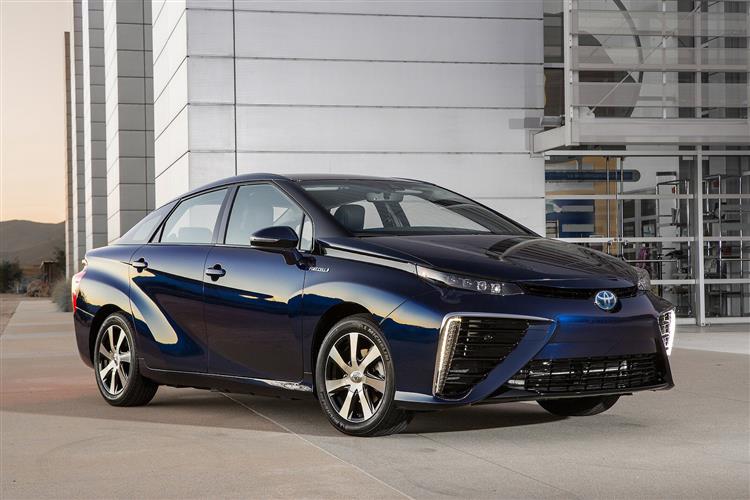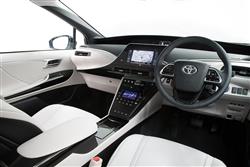FUTURE-PROOF (some text hidden) --NONE--
By Jonathan Crouch
Introductionword count: 57
The first generation version of Toyota's innovative, fuel-cell Mirai marked another landmark in the company's relentless pursuit of progress. Theoretically as convenient as a petrol car, but as clean as an electric one, this Mirai aimed to pack the future into a family saloon that led the charge for hydrogen power in the 21st century's second decade.
Modelsword count: 5
5 door Hatch (Fuel Cell)
Historyword count: 178
Every now and again a new type of automobile comes along to challenge the traditional way of life for the millions of motorists who have long-established rituals governing how, when and where they drive. Toyota have form in disrupting the norm. Having introduced a bemused world to the Prius electric-hybrid in the late 'Nineties, the Japanese giant has been instrumental in opening the minds of motorists to alternative ways of fuelling and re-fuelling their car. With the Mirai in its first generation form back in 2014, Toyota took another giant leap forward, overcoming both the limitations of plug-in electric vehicles and the scarcity of oil, by turning the most abundant element in nature - hydrogen - into a fuel that can generate electric power on-board. To achieve this in a family-sized package was remarkable. Even so, Toyota shifted only around 10,000 Mirais across the world in its seven years of production, mostly at a loss on leases to eco-minded fleets. It finished production in 2021, replaced by a completely new - and very different - second generation model.
What You Getword count: 158
The Mirai was based on a MK3 Toyota Prius - which might be evident from the dimensions and from a look at the exterior styling. Much of the exterior design of the Mirai owes itself to the sciences of aerodynamic efficiency and electrolysis. Each surface is designed either to help the car slip through the air more easily, or to suck in more air to stimulate the process of turning hydrogen into electricity. Inside, the designers saved considerable space by replacing physical controls with large touch-screen surfaces that dominate the cockpit. They thought about the needs of the likely drivers of this car and included neat little touches like a handy storage area that allows wireless smartphone charging for compatible devices. This is a four-seat car due to the need to keep the heaviest parts as central as possible but passengers are compensated with plenty storage areas. Boot space, however, is smaller than most comparably-sized family hatch-sized models.
To see the full road test text contact us on 0330 0020 227
Pictures (high res disabled)

.jpg)
|
.jpg)
|
.jpg)
| |||
.jpg)
|
.jpg)
|
.jpg)
| |||
.jpg)
|

|
Scoring (subset of scores)
Category: Hybrid, Plug-in, Electric & Hydrogen
| Performance | |
| Handling | |
| Comfort | |
| Space | |
| Styling, Build, Value, Equipment, Depreciation, Handling, Insurance and Total scores are available with our full data feed. | |



